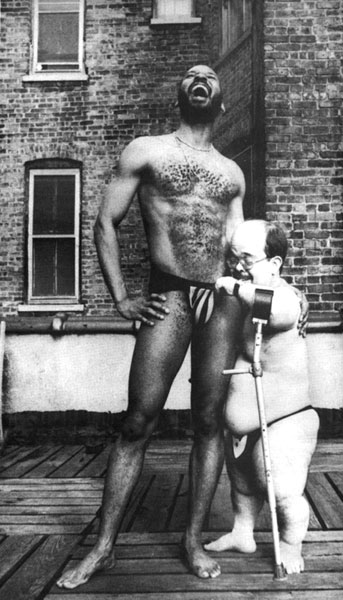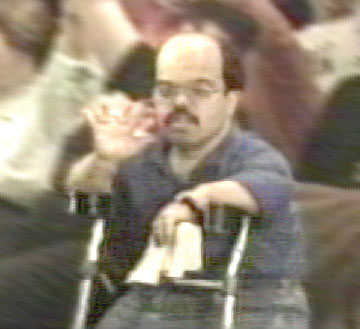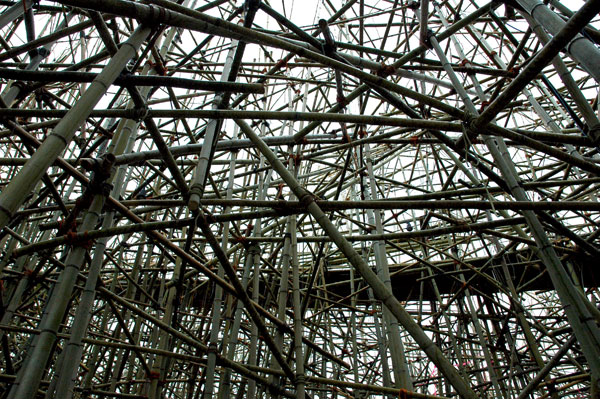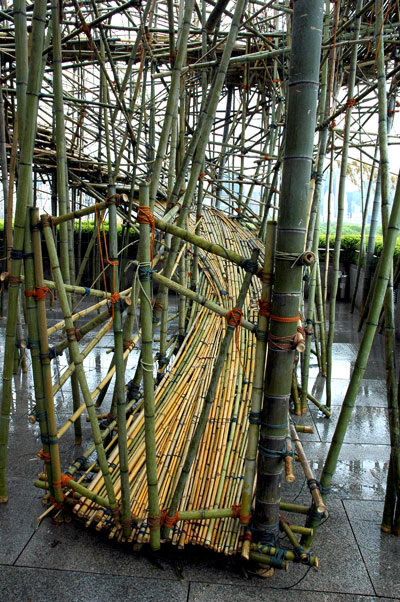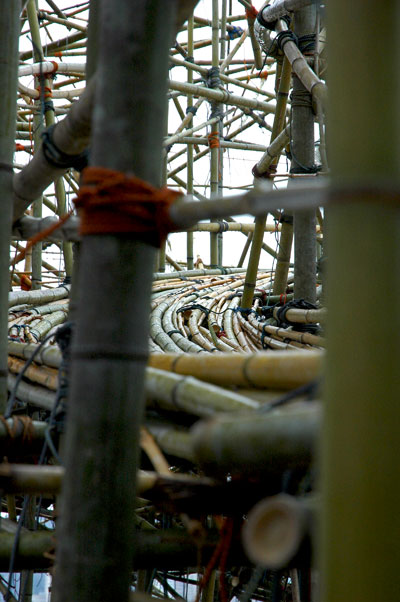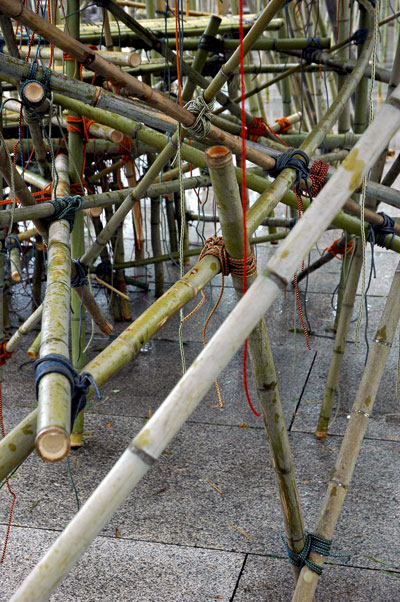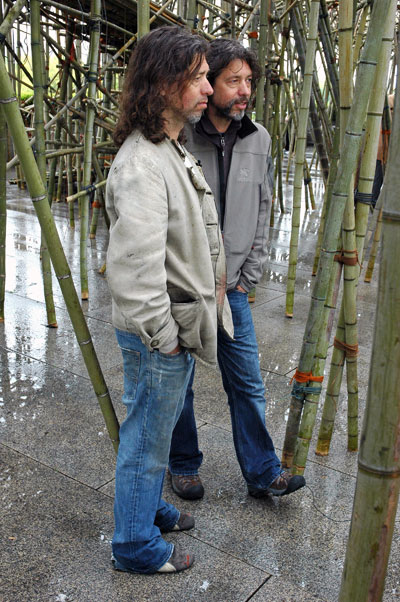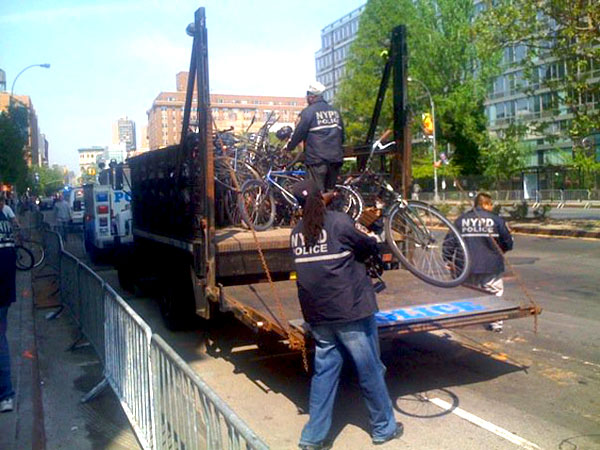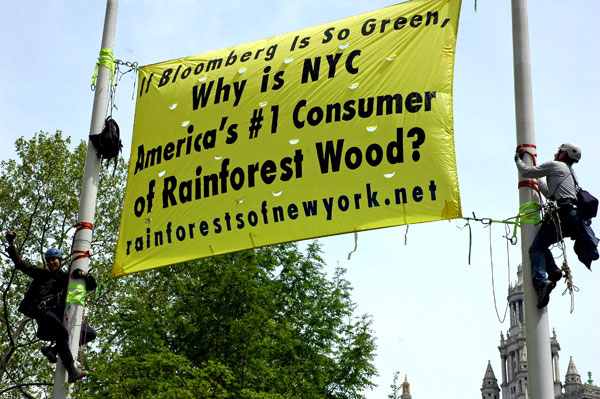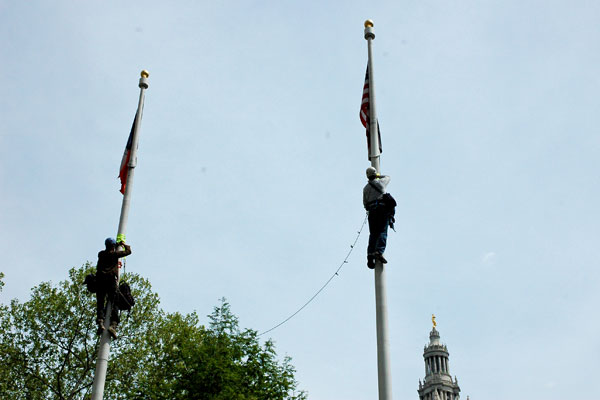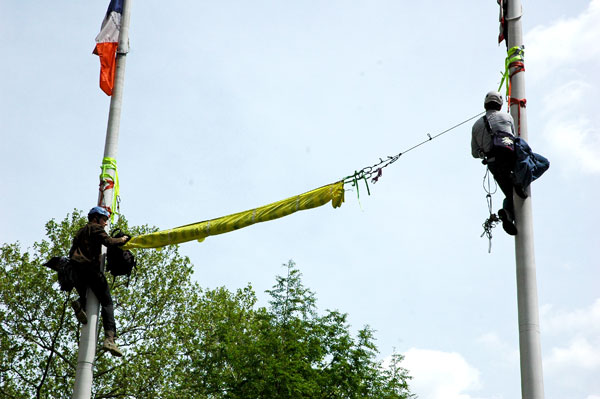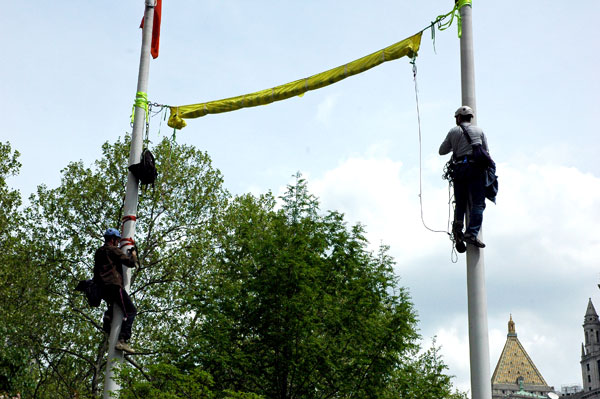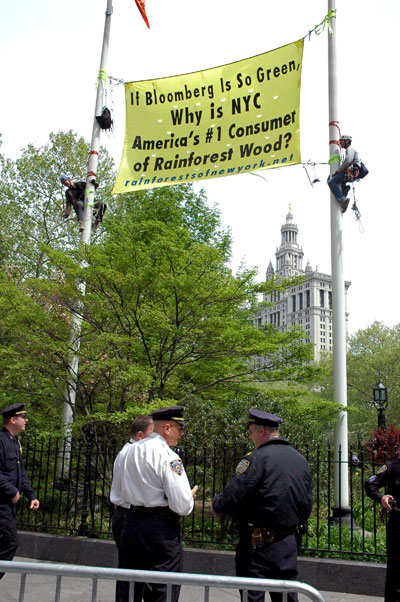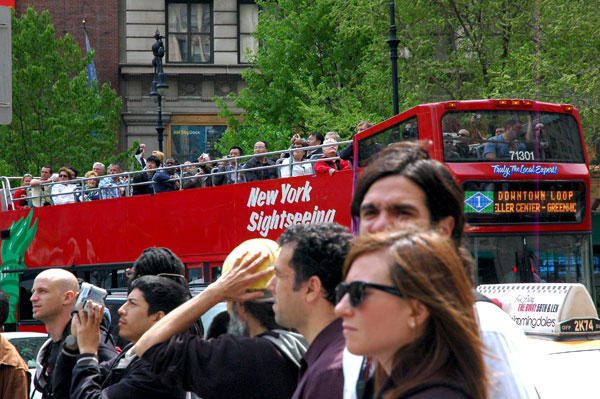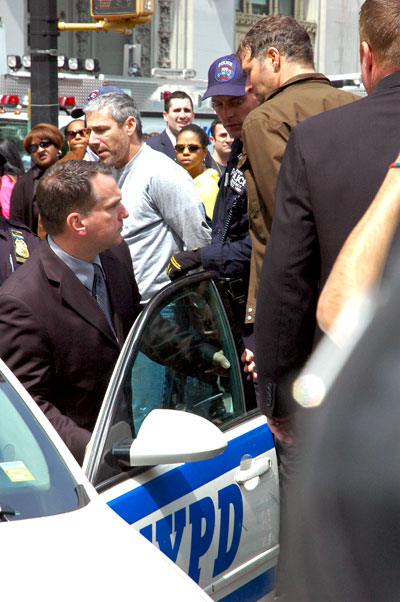It's probably not technically a pop-up show. It's also not merely another spawn (if here a silver lining) of our continuing Great Recession, like most of the new spaces hosting new art in New York and elsewhere. Then could we be watching the birth of a Greenpoint Biannual, a shelter for the emerging artists' own periodic "cross section of contemporary art production", to borrow a phrase from the Whitney itself?
Barry and I were in the former Catholic St. Cecilia Convent last Sunday for the second time in six months. Once again Father Jim, the pastor of the parish had generously and visionarily turned the space over to some young curators and artists. The Round Robin Collective's "ECSTATIC", both an exhibition and a series of events and performances, assembled by a group of invited artists, ends its four-week run this Sunday. An excerpt from the statement which appears on the show's website:
While some of the participating artists' work deals directly with notions of ecstasy, the title of the show does not allude to an overt theme in the work presented; rather, it refers to the process of making and encountering art and the results produced from inspired relationships.
Yes!
Three floors of the formerly-empty rooms of the nearly century-old building are filled by underknown artists with interesting new work in virtually every medium. I had been eagerly anticipating a visit, because of the pleasures we had encountered last September in the show put together by a different group of artists, but almost as soon as we walked in I thought I had died and gone to heaven. There are certainly great pleasures to be found in visiting museums and galleries, but they are nothing like those associated with the immediacy and serendipity of sharing in the work of good artists in any medium when they decide to put on a show with only a minimum of structure or system provided from without.
While some of the work may not completely unfold while competing with the intrusiveness of the abandoned-convent environment (just about the opposite of the clean white box so associated with the exhibition of art in the late twentieth century), in many if not most cases the circumstances of the installations seem ideal, oddly better than what a gallery might provide.
The list of artists includes: Lisa Boumstein-Smalley, Mary Billyou, Amanda Browder & Stuart Keeler, Caroline Burghardt, Lisa Caccioppoli, Ofri Cnaani, Chris Cobb, David Coyle, Jeff DeGolier, Martin Esteves, Gisela Insuaste, Jamie Kim, Stephanie Liner, Deirdre McConnell, Katherin McInnis, Emcee C.M., Master of None, Huong Ngo, Christopher Rose, Stephanie Rothenberg, Dorothy Royle, Matthew Spiegelman, Janos Stone, Cassie Thorton + Action Club, Jenny Vogel & David McBride, and Audra Wolowiec.
For more on "ECSTATIC", see Daniel Pearce's piece on IDIOM.

Stephanie Rothenberg
Stephanie Rothenberg installed a fairly-convincing office environment in a room just inside the front door of the convent. This image is of only one of a handful of posters suggesting advertising for an imagined employment agency. From the "Ecstatic" site:
Stephanie Rothenberg's interdisciplinary practice merges performance, installation and networked media to create provocative interactions that question the boundaries and social constructs of manufactured desires. Her recent work investigates new models of online labor and the virtualization of the global workplace, referencing post-colonial as well as DIY historical precedents.
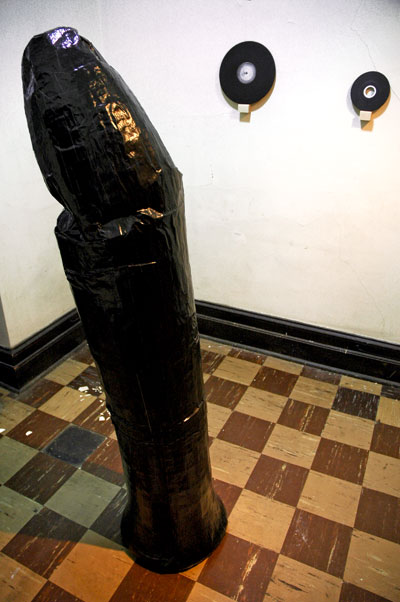
Martin Esteves Come to Mock Stay to Rock and Audra Woloweic howl and sounds of silence
The advertised sole purpose of this five-foot-tall phallic standing sculpture, the work of Martin Esteves, was to fulfill the role occasionally assigned to its medium: Something you bump into while looking at the art on the walls. In this case, neither the sculpture, which rocks on a soft base, nor the bumpee's soft rump would likely be harmed.
The filed-down vinyl records mounted on the wall are the work of Audra Woloweic, whose work addresses sounds, forms of communication and, according to the statement on her own site, "ephemeral moments of the everyday".
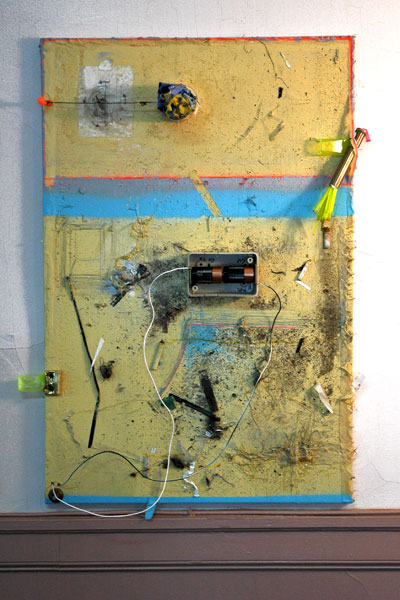
Jeff DeGolier Stride 2009 hair, woodglue, duracell batteries, hair, spraypaint, housepaint, electric motor, wire, glue bottle, etc. on found canvas
Jeff DeGolier's gently-animated piece appeared to be both an integral part of the disintegrating interior of the old building and its (please excuse the expression in this context) its transfiguration.
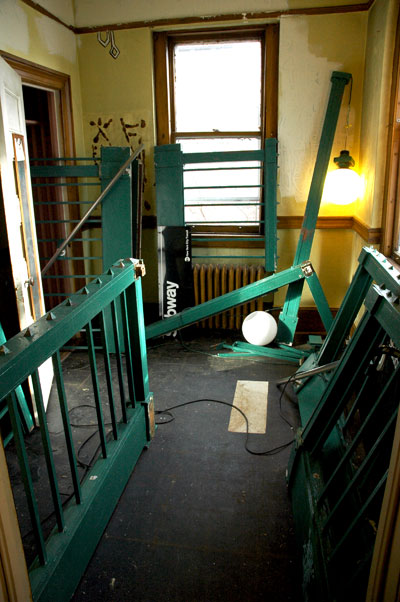
David B. Smith and Brina Thurston
David B. Smith collaborated with Brina Thurston to de-install her large site specific outdoor sculpture from a show ending at Socrates Sculpture Park, cut it into pieces small enough to fit into his car, and re-install it in a small residential room in the convent. The original sculpture, entitled Master-Station, is a life-size replica of a NYC subway entrance, complete with functioning globe lamps.
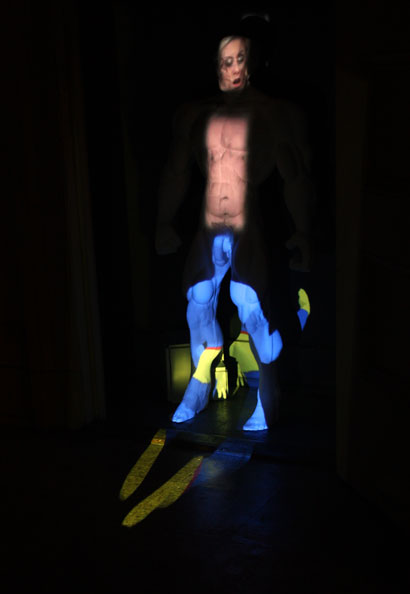
Janos Stone I Never Thought I Would Meet Someone Like You
Janos Stone's installation began with his creation of a monstrously-muscled heroic nude male figure upon which three distinct images were projected, changing male and female faces of porn actors at the top, pornographic videos in the center, and at the bottom a colorful Second Life figure. I've checked out his site since leaving "ECSTATIC" and we both visited with the artist on Friday night at his current show at SLAG Gallery, "LMIRL", and talked to him about his future projects. My head's now spinning.
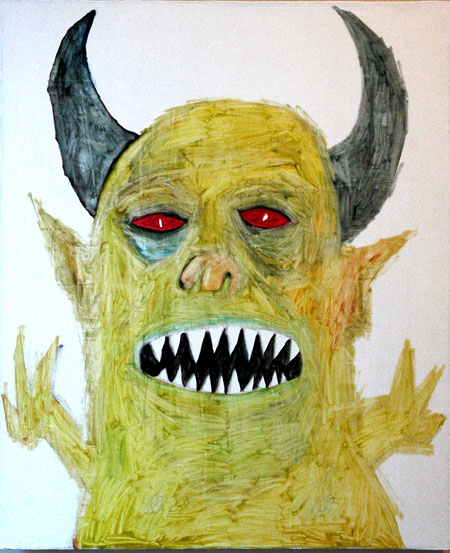
David Coyle I Killed the Monster 2008 oil on canvas 24" x 20"
David Coyle's paintings appear somewhat unremarkable at first, but their severe honesty, humor, and (I don't think I've used this word before) painterly grace brought me back to their small cell-like room several times.
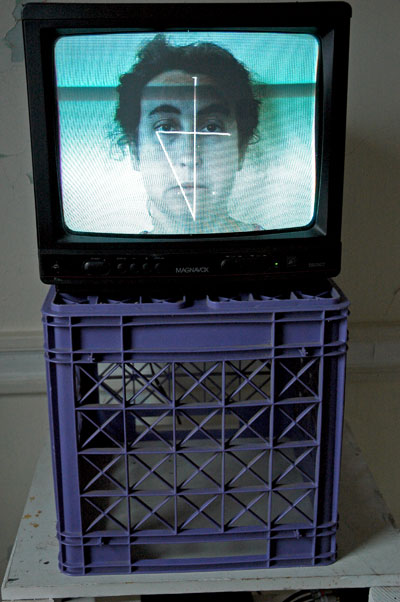
Mary Billyou Subspace Face
A simply-rigged monitor showed Mary Billyou's looped video combining a severe frontal view of the artist's own face with a simple matrix, and was a part of a larger installation with a strong historical context. While it was fairly mesmerizing it remained pretty enigmatic absent more information.
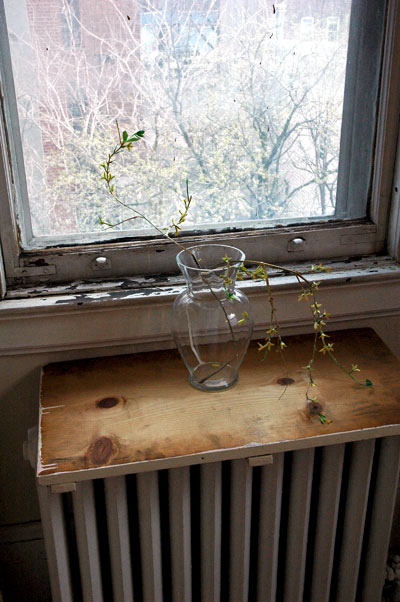
Dorothy Royle
Dorothy Royle's installation of a glass vase of hand-made forsythia branches just inside a window was literally an unfolding performance: The artist visits the site regularly to gradually open up, and wither. The label informed us also that ". . . bright green leaves will grow from ends of the strongest branches. Inevitably, some petals will fall".
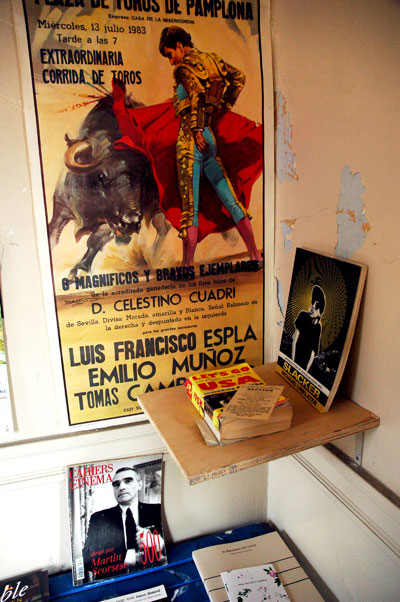
Emcee C.M., Master of None Reading/Radio Room
The installation by this collaborative, which tells us that its work always "combines large-scale public, social and collaborative event-based projects with a more internal process of self-reflection through fiction, storytelling, and filmmaking. This corner of the building, titled "Reading/Radio Room", could easily cocoon a visitor for hours.
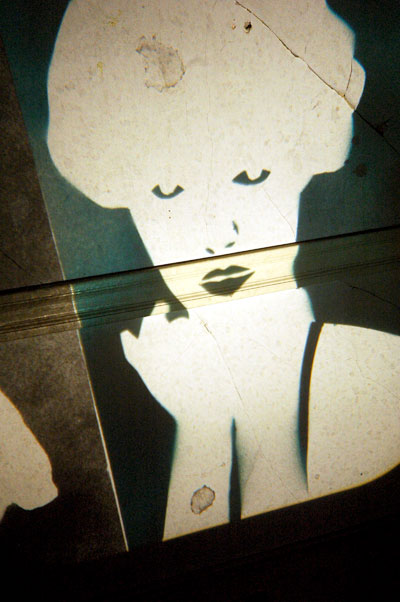
Ofri Cnaani
Ofri Cnaani's art evokes the magic of the ancient magic lantern, but she addresses gender, architectural space, myth and reality in seductive imagery and movement. I first encountered her work in 2008 and I find myself captivated once again.
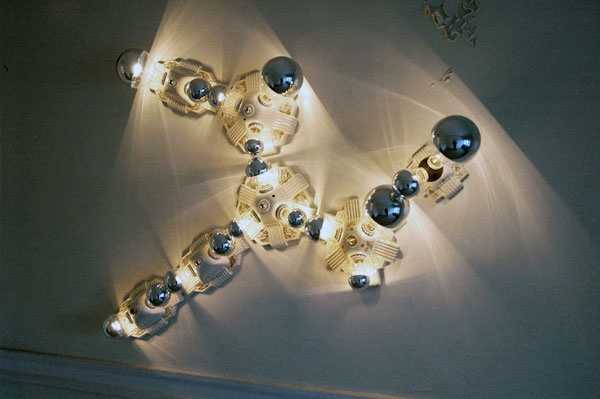
Matthew Spiegelman
Matthew Spiegelman has assembled several lighting installations inside the convent, each of them abstracted from homey old lighting fixtures and each more infectiously joyful - and oddly spooky - than the next.
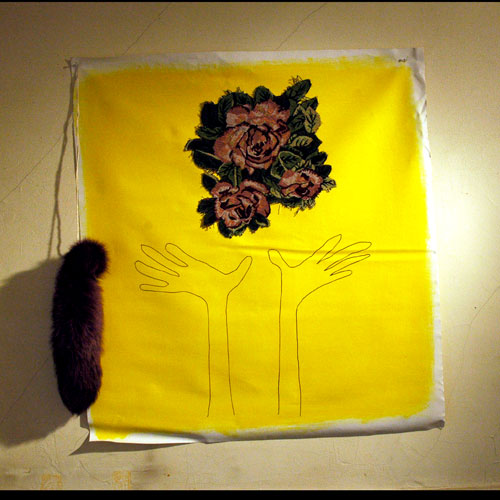
Amanda Browder Future Telling 2010 discarded (found): painted canvas, embroidery, marker, fur
Amanda Browder's piece was in a room which appeared to include both her own work and pieces done in collaboration with Stuart Keeler, but this piece appears to be identified as her own creation.

Cassie Thornton + Action Club
I haven't been able to track down anything on the installation identified as "Cassie Thornton + Action Club" (or, variously, "Action Team"), but the planned chaos of the broom closet-size installation pictured here, and the scrim composed of countless found objects of all sizes which has been assembled in front of the third-floor hallway window just beyond, somehow suggested an advanced postmodern intelligence, and the scrappy art which can ultimately humanize it.
[Janos Stone image from the artist]
